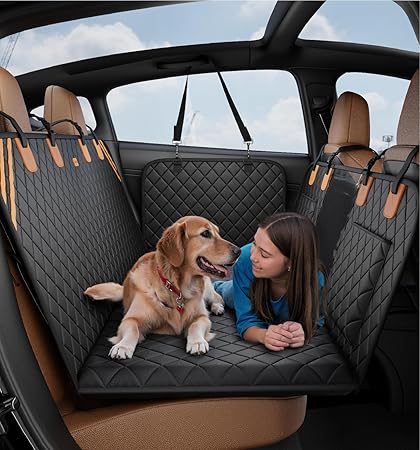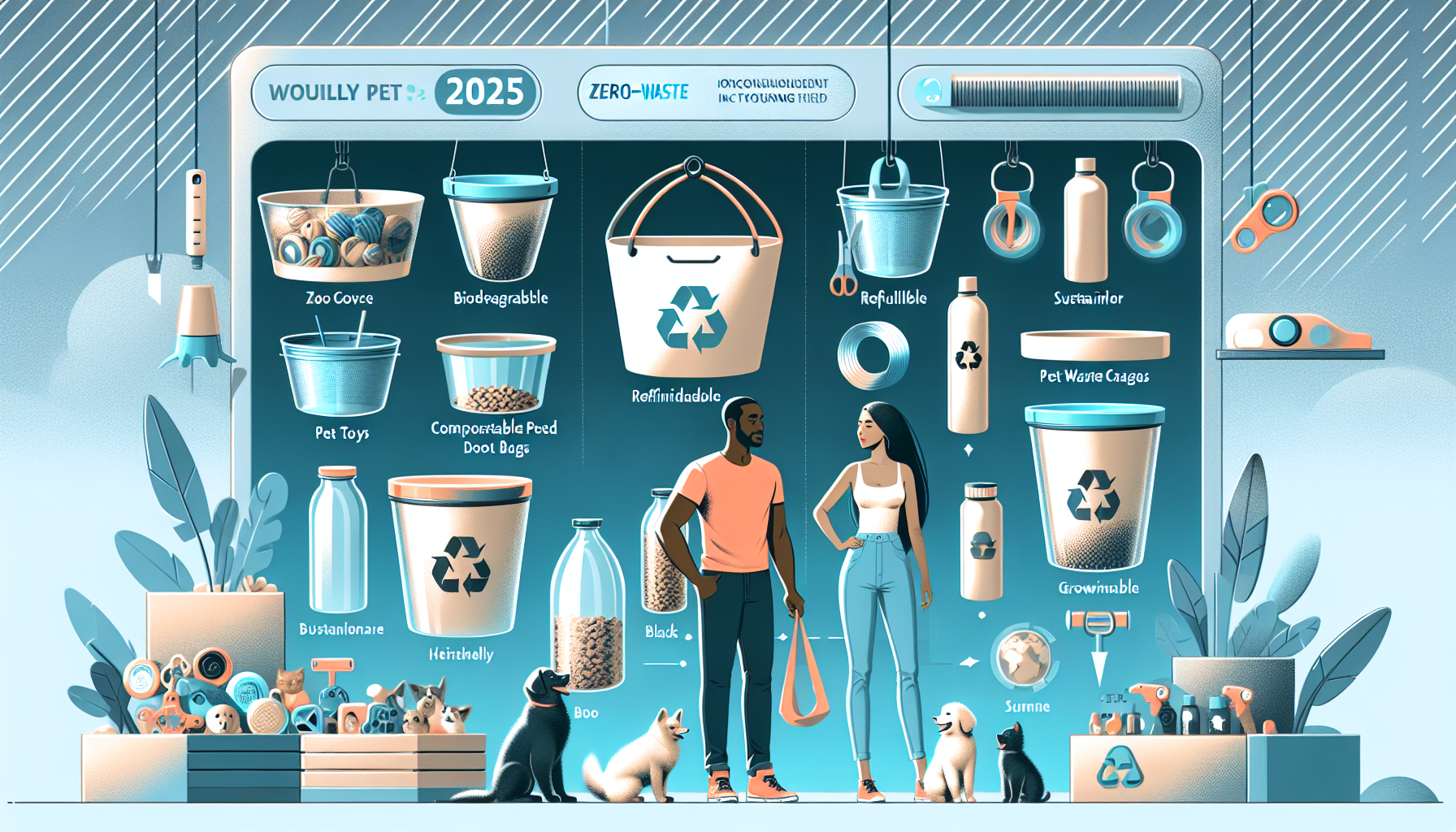
10 Zero-Waste Pet Products in 2025
As we move further into 2025, sustainability continues to shape the choices we make—not just for ourselves but also for our beloved pets. Pet ownership brings immense joy, but it also comes with environmental responsibilities. Traditional pet products often contribute to waste and pollution, but the rise of zero-waste pet products offers a promising alternative. These products minimize environmental impact by reducing waste, using sustainable materials, and promoting reuse or compostability.
In this blog post, we’ll explore 10 innovative zero-waste pet products available in 2025, perfect for eco-conscious pet owners who want to care for their furry friends without compromising the planet.

1. Biodegradable Poop Bags
One of the most common sources of pet waste pollution is plastic poop bags. Conventional plastic bags take hundreds of years to decompose and often end up littering streets and waterways. In 2025, biodegradable poop bags have become the new standard. Made from plant-based materials such as cornstarch or cassava, these bags break down naturally within months in compost or landfill conditions. Doggy Do Good Poop Bags | Dog Waste Bags,
Some brands now offer compostable poop bags that come in minimal, recyclable packaging to further reduce waste. Using biodegradable poop bags means you can responsibly clean up after your dog without contributing to plastic pollution.
2. Refillable Pet Shampoo
Pet grooming products like shampoos and conditioners often come in single-use plastic bottles that are difficult to recycle. Refillable pet shampoo systems have gained popularity in 2025 as a zero-waste alternative. These systems typically involve purchasing shampoo in bulk, concentrated refills, or solid shampoo bars, then using a reusable bottle or container for dispensing. TropiClean SPA Tear Stain Remover for Dogs | Blueberry Facial Shampoo
Solid shampoo bars are especially eco-friendly as they eliminate the need for packaging altogether and last longer than liquid shampoos. Many brands also formulate their products with natural, non-toxic ingredients safe for pets and the environment.
3. Compostable Cat Litter
Traditional clay-based cat litter is not biodegradable and can take up significant landfill space. Conversely, compostable cat litter options made from materials like wood pellets, wheat, corn, or recycled paper have surged in 2025. These litters are plant-based, naturally absorbent, and break down quickly in composting conditions. WORLD’S BEST CAT LITTER Low Tracking & Dust Control Multiple Cat
Some zero-waste cat litter brands even offer packaging made from recycled paper or biodegradable materials. Compostable litters reduce waste and odor while providing a healthier environment for cats.
4. Sustainable Pet Toys
Many pet toys are made from synthetic plastics that are non-recyclable and often end up in landfills. The zero-waste movement has inspired the creation of sustainable pet toys crafted from natural fibers such as organic cotton, hemp, or recycled materials. In 2025, you can find toys stuffed with eco-friendly fillings like wool or kapok instead of synthetic polyester. Original Snuggle Puppy Essentials Starter Kit – Heartbeat Puppy for Dogs
Additionally, some companies offer toy recycling or take-back programs to ensure old toys don’t contribute to waste. Durable, repairable toys also extend product life and reduce the need for replacements.
5. Zero-Waste Pet Food Packaging
Pet food packaging is a major source of waste, typically involving multi-layered plastics that are difficult to recycle. In response, many pet food manufacturers have shifted to zero-waste packaging options. These include compostable bags made from plant-based films, recyclable paper pouches, or reusable containers.
Some brands also offer bulk purchasing or subscription services that minimize packaging waste by sending food in concentrated or refillable formats. Choosing pet food packaged sustainably helps reduce landfill impact and conserves resources.
6. Reusable Pet Bowls
Disposable plastic pet bowls contribute to the growing problem of single-use plastics. In 2025, reusable pet bowls made from sustainable materials like bamboo fiber, stainless steel, or recycled silicone are widely available. These bowls are durable, easy to clean, and often come in minimalist packaging.
Bamboo fiber bowls are compostable at the end of their life cycle, while stainless steel bowls can last a lifetime and are 100% recyclable. Reusable bowls not only reduce waste but also provide safe, toxin-free feeding options for pets.
7. Natural Fiber Pet Beds
Many pet beds are filled with synthetic foam and covered in polyester fabrics that shed microplastics and do not biodegrade. Zero-waste pet beds made from natural fibers such as organic cotton, wool, hemp, or recycled fabrics have become popular in 2025.
These beds use natural fillings like wool batting or kapok, which are breathable, hypoallergenic, and compostable. The covers are designed to be removable and washable, extending the bed’s lifespan. When a bed reaches the end of its use, its components can be composted or recycled, minimizing landfill waste.
8. Eco-Friendly Collars and Leashes
Traditional pet collars and leashes are often made from nylon or synthetic leather, which are not biodegradable. In 2025, eco-friendly collars and leashes made from natural fibers like hemp, organic cotton, or recycled materials are mainstream. These alternatives are just as strong and durable but have a significantly lower environmental footprint.
Some brands use vegetable-tanned leather or recycled ocean plastics to craft stylish, sustainable accessories. Adjustable, repairable designs extend product life and reduce the frequency of replacements.
9. DIY and Upcycled Pet Accessories
The zero-waste movement encourages creativity and resourcefulness. Many pet owners in 2025 are turning to DIY or upcycled pet accessories made from repurposed household items. For example, old t-shirts can be braided into durable tug toys, or worn-out jeans can be transformed into cozy pet beds.
Not only do these projects reduce waste, but they also provide a personal touch and can save money. Numerous online tutorials and kits are available to guide pet owners in crafting their own zero-waste pet products.
10. Sustainable Pet Treat Packaging
Just like pet food, treat packaging often contributes to plastic waste. Zero-waste pet treat brands in 2025 package their goodies in compostable bags, recyclable glass jars, or reusable tins. Bulk treat options allow owners to refill containers instead of buying new packages.
Some companies even sell treats in seed paper packaging that can be planted after use to grow flowers or herbs, creating a full-circle eco-friendly experience. Choosing treats with sustainable packaging is an easy way to reduce your pet’s environmental pawprint.
Best Eco-Friendly Gifts for Pet Lovers
Conclusion:
Being a responsible pet owner in 2025 means considering the environmental impact of not just what you feed your pet but also the products you use daily. The zero-waste pet product movement is growing rapidly, offering a wide range of sustainable, functional, and stylish options that make eco-friendly choices easier than ever.
From biodegradable poop bags to compostable cat litter, refillable shampoos, and natural fiber beds, these 10 zero-waste pet products prove you can care for your pet and the planet simultaneously. By choosing these products, you help reduce plastic pollution, conserve resources, and promote a healthier ecosystem for future generations of pets and their humans.
Embrace zero-waste pet ownership in 2025 and lead the way toward a more sustainable, compassionate world—one paw at a time!
